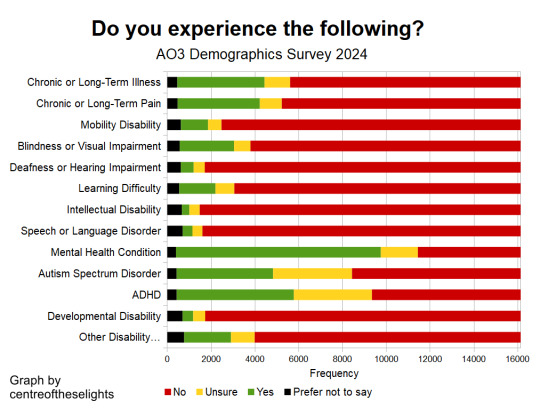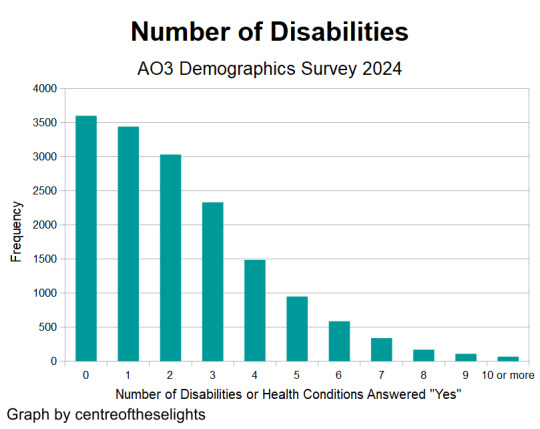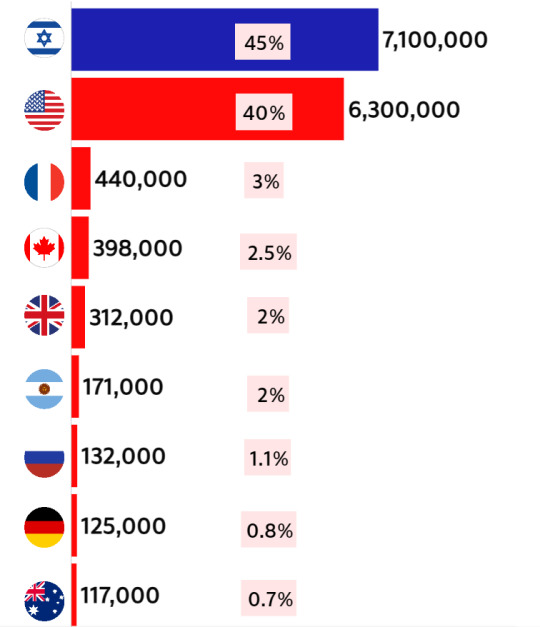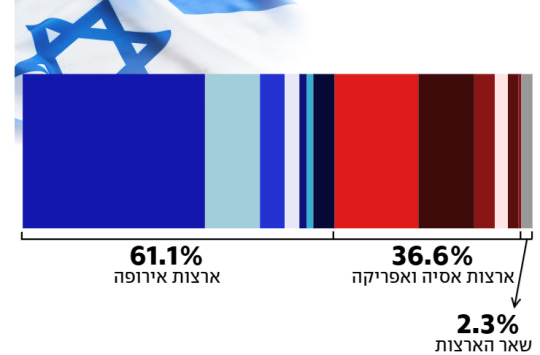#population demographic reports
Explore tagged Tumblr posts
Text
Understanding Population Demographics: Key Insights from Population Demographic Reports
Population demographics play a crucial role in understanding the composition, trends, and characteristics of a population.
By analyzing population demographic reports, researchers, policymakers, and businesses will be able to gain valuable insights that inform decision-making processes. This blog explores the significance of population demographics and highlights key findings from demographic reports.

What are Population Demographics?
Population demographics refer to the statistical characteristics of a population, including its size, age distribution, gender composition, racial and ethnic makeup, education levels, income distribution, and more. These factors provide a comprehensive snapshot of the population's structure and dynamics. Population demographic reports compile and analyze data collected through census surveys, national surveys, and other sources to present a detailed overview of the population's characteristics.
Understanding Age Distribution: Age distribution is a fundamental aspect of population demographics. It examines the proportion of individuals across different age groups within a population. This information is vital for understanding societal needs and planning for healthcare, education, and social services. Demographic reports can reveal insights such as an aging population, youth bulges, or variations in age groups across regions, helping policymakers develop appropriate policies and programs. For example, countries with a large aging population may need to allocate resources for healthcare and retirement benefits, while those with a significant youth population may focus on education and employment opportunities.
Unveiling Diversity: Race and Ethnicity: Population demographic reports also shed light on the racial and ethnic composition of a population. This data is crucial for addressing issues related to equity, inclusion, and social justice. By examining demographic trends, researchers can identify disparities, evaluate representation, and design targeted interventions to bridge gaps and promote diversity. For instance, demographic reports may highlight underrepresented communities that require targeted support in areas such as education, employment, and political representation. Understanding racial and ethnic diversity is essential for creating inclusive policies and fostering a society that values and celebrates its multicultural fabric.
Income Distribution and Socioeconomic Status: Another critical aspect of population demographics is income distribution and socioeconomic status. Demographic reports do provide data on income levels, poverty rates, employment rates, and educational attainment. These insights enable policymakers to develop strategies for poverty reduction, social welfare, and economic development. Businesses can also leverage this data to identify consumer segments and make informed marketing decisions.
Migration Patterns and Urbanization: Demographic reports often include information about migration patterns and urbanization trends. Understanding population movements helps policymakers plan infrastructure development, housing needs, and transportation systems. It also offers insights into cultural diversity, economic opportunities, and the impact of migration on local communities.
Conclusion:
Population demographic reports are invaluable sources of information that allow us to understand the composition, trends, and characteristics of a population. By analyzing these reports, researchers, policymakers, and businesses can make informed decisions that promote social and economic development, equity, and inclusive in diverse communities.
3 notes
·
View notes
Text
Jharkhand High Court Questions Officials on Tribal Population Decline
Jharkhand High Court seeks detailed explanation on Bangladeshi infiltration claims Jharkhand High Court expresses concern over affidavits from six Santal districts regarding tribal population decline and alleged infiltration. JAMSHEDPUR – The Jharkhand High Court has raised questions about affidavits submitted by Deputy Commissioners and Superintendents of Police from six Santal districts. The…
#Aadhaar and Voter ID processing#राज्य#Bangladeshi infiltration claims#Chief Justice Arun Kumar Rai#Deputy Commissioners affidavits#Jharkhand demographic concerns#Jharkhand High Court hearing#Public Interest Litigation Daniel Danish#Santal districts investigation#state#Superintendents of Police reports#tribal population decline
0 notes
Link
Worlds largest Population in India
0 notes
Text
Nepal Demographic and Health Survey (NDHS) 2022 | Key Indicators
Nepal Demographic and Health Survey (NDHS) 2022 | Key Indicators
The Ministry of Health and Population (MoHP) Nepal disseminated the key indicators of the Nepal Demographic and Health Survey (NDHS) 2022. Photo: Madhav Chaulagain @madhavjee NDHS 2022: Photo: Madhav Chaulagain @madhavjee Photo: Madhav Chaulagain @madhavjee Photo: Madhav Chaulagain @madhavjee Photo: Madhav Chaulagain @madhavjee Photo: Madhav Chaulagain @madhavjee Photo: Madhav Chaulagain…

View On WordPress
#DHS#Health in Data#Ministry of Health & population#Ministry of Health and Population#MoHP#NDHS#Nepal Demographic and Health Survey#Progress of the Health and Population Sector#Progress of the Health Sector#Publications#Reports#The DHS Program
0 notes
Text


In the AO3 Demographics Survey 2024 - an unofficial demographics survey of 16,131 AO3 users - 78% of respondents reported having at least one disability, neurodivergence, or other health condition, including 58% experiencing mental health conditions, 33% experiencing ADHD, and 27% experiencing autism.
To see more analysis, including full transcripts of all the data and comparisons to disability statistics for the general US population, please view the full results on AO3.
#disability#disabled#disabilities#neurodiversity#neurodivergence#adhd#autism#mental health#mental illness#fandom#ao3#archive of our own#fandom survey#survey results#ao3 demographics survey 2024
584 notes
·
View notes
Text
Today is Erev Yom Ha'Shoah (Eve of Holocaust Memorial Day) in Israel. It will be observed by Jews outside of Israel, too.

The Hebrew date was chosen to honor the outbreak of the Warsaw Ghetto Uprising. It's also a week before Erev Yom Ha'Zikaron Le'Chalalei Ma'archot Yisrael (Eve of Israel's Memorial Day for its Fallen Soldiers and Terror Victims), which is itself observed a day before Yom Ha'Atzmaut Le'Yisrael (Israel's Independence Day). A lot of people have remarked on the connection between the three dates. On Yom Ha'Atzmaut, we celebrate our independence, which allows us to determine our own fate, and defend ourselves without being dependent on anyone else, right after we remember the price in human life that we have paid and continue to pay for this independence, and a week before we mourn the price we've had to pay for not getting to have self defence during the Holocaust. NEVER FORGET that in one Nazi shooting pit alone (out of almost two thousand) during just 2 days (Erev Yom Kippur and Yom Kippur 1941), more Jewish men, women and kids were slaughtered than in the 77 years since Israel's Independence War was started by the Arabs. This unbreakable connection between the living and the dead, between our joy and our grief, is often addressed with the Hebrew phrase, במותם ציוו לנו את החיים, "With their death, they ordered us to live."

On this Erev Yom Ha'Shoah, I'd like to share with you some data, published on Thursday by Israel's Central Bureau for Statistics (source in Hebrew).
The number of Jews worldwide is 15.7 million, still lower than it was in 1939, before the Holocaust, 85 years ago (that is what a genocide looks like demographically).
7.1 million Jews live in Israel (45% of world Jewry) 6.3 million Jews live in the US (40% of world Jewry)
Here's the data for the top 9 Jewish communities in the world:

There are about 133,000 Holocaust survivors currently living in Israel. Most (80%) live in big cities in central Israel. Around 1,500 are still evacuated from their homes in northern and southern Israel due to the war (back in January, on International Holocaust Remembrance Day, there was a report about 1,894 survivors who also became internal refugees due to the war. Source in Hebrew). One Holocaust survivor, 86 years old Shlomo Mansour, is still held hostage in Gaza. He survived the Farhud in Iraq.

I haven't seen any official number for how many survivors had been slaughtered as a part of Hamas' massacre, despite everyone here being aware that Holocaust survivors had been murdered on Oct 7, such as 91 years old Moshe Ridler. Maybe, as we're still discovering that some people thought to have been kidnapped during the massacre, were actually killed on that day, no one wants to give a "final" number while Shlomo has not yet been returned alive.

Out of all Israeli Holocaust survivors, 61.1% were born in Europe (35.8% in the countries of the former Soviet Union, 10.8% in Romania, 4.9% in Poland, 2.9% in Bulgaria, 1.5% in Germany and Austria, 1.3% in Hungary, 4.2% in the rest of Europe), 36.6% were born in Asia or Africa (16.5% in Morocco, 10.9% in Iraq, 4% in Tunisia, 2.6% in Libya, 2.1% in Algeria, 0.5% in other Asian and African countries) and 2.3% were born elsewhere.

Out of all Holocaust survivors in Israel, 6.2% managed to make it here before the establishment of the state, despite the British Mandate's immigration policy against it (up until May 13, 1948). 30.5% made it to Israel during its very first years (May 14, 1948 until 1951), another 29.8% arrived in the following decades (1952-1989), and 33.5% made Aliyah once the Soviet Union collapsed, and Jewish immigration to the west (which included Israel) was no longer prohibited by the Soviet regimes (1990 on).
The second biggest community of survivors in the world is in the US, the third biggest (but second biggest relative to the size of the population) is in Australia. I heard from many Holocaust survivors who chose to immigrate there that they wanted to get "as physically far away from Europe as possible."
For a few years now, there's been this project in Israel, called Maalim Zikaron, מעלים זיכרון (uploading memory. Here's the project's site in Hebrew. In English it's called Sharing Memories, and here's the English version of the site) where Israeli celebs are asked to meet up with a Holocaust survivor (it's done in Hebrew), and share the survivor's story and the meeting on their social media on Erev Yom Ha'Shoah (which is today). Each year, there's also one non-Israeli Jewish celeb asked to participate (in English. This time around it's Michael Rapaport, he's meeting Aliza, an 81 years old survivor from the Netherlands, who was hidden along with 9 other Jewish babies for two years. He uploaded a preview of his meeting with her here, where he asked her what it means to her to be a Jew, and from what I understand, he will upload more today to the same IG account). This year, there will be an emphasis on Holocaust survivors who also survived Oct 7 (with 6 of the 20 participating survivors having survived Hamas as well). Here's a small bit from an interview with one such survivor, 90 years old Daniel Luz from kibbutz Be'eri:
(for all of my updates and ask replies regarding Israel, click here)
#israel#antisemitism#israeli#israel news#israel under attack#israel under fire#terrorism#anti terrorism#hamas#antisemitic#antisemites#jews#jew#judaism#jumblr#frumblr#jewish#israelunderattack#shoah#holocaust
466 notes
·
View notes
Note
I recently learned that bisexuals have higher rates of poverty than gay and lesbian folks -way higher, actually. Do you know of any study or essay that goes into the possible causes? I can only find sources describing the problem, none actually hypothesizing
Nobody knows why, but there are a few competing theories. I think what most of the reports on this subject fail to take into account is that bisexuals are a larger segment of the population than either lesbians or gay men -- and so we're really comparing apples to oranges here, in terms of demographic size and perhaps even variance. Bisexuals are the largest LGBT group and we may see a greater statistical diversity of outcomes within that group than in others.
The prevailing explanation that I've seen is that bisexuals are less likely to find a community "home" -- their identity is less socially legible and visible and so they may be less likely to access LGBTQ resources, forge community ties, or even to really recognize themselves as a member of the community deserving of such things. Not knowing yourself or your people while still being marginalized can be really damaging.
Bisexuals also face the dual vulnerability of both being queer and potentially being in romantic relationships with straight people who are homophobic and will retaliate against them for their queerness. The domestic violence and sexual assault vulnerabilities bisexuals face are doubtless related to their economic outcomes.
Sometimes, these dynamics get misreported as gay men and lesbians oppressing bisexuals, but that's not really the mechanism at work here. It's relationships with cishet men. I believe it was Butchanarchist who pointed out that lesbians face the same rate of domestic violence as bisexual women when they're in relationships with men. Of course, fewer lesbians on average are in relationships with men. So in reality it's the on-average greater proximity with and vulnerability to cishet people that bisexuals tend to suffer from. Gay men and lesbians are sometimes (but far from always!) able to get more distance from their oppressors than bisexuals are. But the oppressors in both cases are the same.
169 notes
·
View notes
Text

Background: During adolescence, bullying often has a sexual content. Involvement in bullying as a bully, victim or both has been associated with a range of negative health outcomes. Transgender youth appear to face elevated rates of bullying in comparison to their mainstream peers. However, the involvement of transgender youth as perpetrators of bullying remains unclear in the recent literature. Objective: The aim of this study was to compare involvement in bullying between transgender and mainstream youth and among middle and late adolescents in a general population sample. Methods: Our study included 139,829 students in total, divided between a comprehensive school and an upper secondary education sample. Associations between gender identity and involvement in bullying were first studied using cross-tabulations with chi-square statistics. Logistic regression was used to study multivariate associations. Gender identity was used as the independent variable, with cisgender as the reference category. Subjection to and perpetration of bullying were entered each in turn as the dependent variable. Demographic factors, family characteristics, internalizing symptoms, externalizing behaviors, and involvement in bullying in the other role were added as confounding factors. Odds ratios (OR) with 95% confidence intervals (95% CI) are given. The limit for statistical significance was set at p < 0.001. Results: Both experiences of being bullied and perpetrating bullying were more commonly reported by transgender youth than by cisgender youth. Among transgender youth, all involvement in bullying was more commonly reported by non-binary youth than those identifying with the opposite sex. Logistic regression revealed that non-binary identity was most strongly associated with involvement in bullying, followed by opposite sex identity and cisgender identity. Transgender identities were also more strongly associated with perpetration of bullying than subjection to bullying.
--
Secondly, we found that transgender identity was generally associated with perpetrating bullying and that the association was stronger than that of transgender identity and being bullied. To the best of our knowledge, past research has not examined perpetration of bullying among gender minority youth, thus rendering comparisons to prior research impossible. In a study by Dank et al. (2014), however, it was reported that the few transgender young people in their study were the ones most likely to perpetrate dating violence among their sample.
--
Thirdly, non-binary identity was more strongly associated with involvement in bullying than opposite sex identity. Past research has found elevated rates of being subjected to bullying among youth (Lowry et al., 2020; van Beusekom et al., 2020) and transgender youth (Gower et al., 2018) who perceive themselves as more gender non-conforming (i.e., masculine females or feminine males) than youth with no such perception. Non-binary identifying youth particularly may display gender expression that does not conform to either masculine or feminine roles, and this may make them vulnerable to being bullied either due to simply being different from the mainstream, or as a result of heterosexist control. We found, however, that not only being bullied but also engaging in bullying was even more common among non-binary (perception of gender conforms to both or neither sex or it varies) than among opposite sex identifying youth.
==
"Non-binary" is just a new way to bully other people.
Trying to make people refer to you in stupid, language defying ways, like "schglie/schglem," at the threat of being called a bigot, when you're a completely average man or woman, is the modern day equivalent of making the kids in the playground bow and call you "the god of the jungle gym" at the threat of being beaten up, when you can't actually do that flip from hanging by your knees into a standing position.
When, unlike the playground, society has given you the power to actually carry out that threat, you're not "marginalized," you're the ruling class. (What's that "power plus" arithmetic again?)
Whenever you enter the room, people tense up. And you love it. It's the whole point. Gay and transsexual people just want to blend in, but "nonbinary" is about the opposite. Everybody pays attention to you and you steal the oxygen out of the room. You say it's about "being kind," but you and everyone else knows what you are, which means it's really about being in control, but from a false position of vulnerability.
So it's no wonder it attracts narcissists and bullies. Especially when it's an effort-free way of being celebrated for a month - and on and off the rest of the year for an endless parade of "awareness" days - for being completely unremarkable and average.
Not being a tired stereotype is not an achievement, least of all one that needs to be celebrated.
#non binary#nonbinary#narcissism#narcissistic personality disorder#bullying#trans violence#gender ideology#queer theory#gender identity#religion is a mental illness#authoritarianism
965 notes
·
View notes
Note
So, I could be out-of-bounds here since I think you meant it as dark humor, but what did you mean in the tags of that 'israel-hamas war' post? I suspect you(and op) are criticizing that framing because Israel is obviously demolishing much more than 'Hamas'(and probably doing a terrible job of actually targeting terrorists- they seem content to reduce Gaza to rubble even if the brass of Hamas escapes). I'm guessing that by saying "joining the Israel-Hamas war on the side of Hamas" you mean, if they're going to conflate Palestinians with Hamas unilaterally, then you're saying, whatever the media wants to call Palestinian civilians- you still support them. I am asking anyways though bc, given reports of increasing antisemitic activity in the US and Europe, I am worried about the potential for blurring lines between the cause of Palestinian civilians and the alt-right individuals who are likely masking their antisemitism in the context of being anti-Zionist. Although Israel's government has been the source of Palestinian loss for decades, (it seems to me that) even joking about supporting terrorism is enough to reinforce the persuasion that Israeli/Palestinian Jews and Palestinian Arabs must be mutually-exclusive peoples. I don't think it's fully rational per se(tho I'm not claiming to have all the relevant information myself, and I'm white US American goyim so like- grain of salt-), but I think that existential fear is the incredible hurdle facing Zionist Jews. (Idc too much about the opinions of non-Jewish Zionists bc I don't grant that they are dealing with the same emotional complications at this time, although that doesn't stop me from arguing w my acquaintances abt their callous acceptance of US/Israeli propaganda.) I just think..... isn't it overall harmful to allow anti-semitic rhetoric, even used sarcastically, to enter the genuine humanist cause for Palestinian liberation? Or, have I misunderstood, and you actually are not in opposition to Hamas, or something else I didn't think of?
hi! thank you for approaching the question thoughtfully and with curiosity, i really appreciate it. i was being kind of flippant with that meme, but this is the only ask i'm going to reply to on the matter given that i am neither jewish nor arab, so i'm going to answer in earnest:
hamas is a political resistance movement with an armed wing, much like the black panthers party was, and like the bpp, a large part of the organization is dedicated to social welfare and civic restoration.
they have stated that they are not against judaism, but against the zionist project. they openly support political solutions.
labeling hamas a terrorist group is a propaganda tactic used by the united states and israel to justify the horrors of settler colonization.
hamas is palestine, a part of it, even if palestinians like any other demographic on earth, are not a unified, single-minded people. to declare hamas a separate entity falls prey to the imperialist lie that there is an enemy to fight "fairly" within the people they are displacing and exterminating.
am i rejoicing in the deaths of israelis? of course not. killing civilians and taking civilian hostages is a war crime, whether it is committed by the opresor or the oppressed. the israeli government is not its people, and many jews, within israel as well as in the US, are bravely risking their lives to publicly dissent the criminal acts of the israeli government. all loss of human life is a tragedy.
no one should ever be faced with the choice between annihilation and murderous violence after exhausting all other forms of peaceful protest and being massacred like animals.
but why is it that we consider a resistance group formed within a population with a median age of eighteen a terrorist group, and not the IDF, a US-backed military force with an annual budget of twenty billion dollars?
i am currently reading hamas and civil society in gaza by sara roy to learn more about hamas and the history of israel in palestine. i'll remember to post more excerpts which i am admittedly terrible at.
but all of the information above can be found by reading wikipedia. investigating with duckduckgo searches (not gonna pretend google isn't prioritizing propaganda, to be fair), and reading reliable news coverage like aljazeera and the many journalists who are at risk of, or have lost their lives, reporting on the ground.
i have also appreciated reading posts from @determinate-negation @opencommunion @fairuzfan @ibtisams and @bloglikeanegyptian amongst others
in conclusion:






204 notes
·
View notes
Text
Long COVID symptom severity varies widely by age, gender, and socioeconomic status - Published Sept 2, 2024
By Dr. Sushama R. Chaphalkar, PhD.
In a recent study published in the journal JRSM Open, researchers analyze self-reported symptoms of long coronavirus disease 2019 (LC) from individuals using a healthcare app to examine the potential impact of demographic factors on the severity of symptoms. The researchers found that LC symptom severity varied significantly by age, gender, race, education, and socioeconomic status.
Research highlights the urgent need for targeted interventions as age, gender, and social factors play a crucial role in the intensity of long COVID symptoms. What factors increase the risk of long COVID? Several months after recovering from coronavirus disease 2019 (COVID-19), patients with LC may continue to suffer from numerous symptoms, some of which include fatigue, brain fog, and chest pain. The prevalence of LC varies, with estimates ranging from 10-30% in non-hospitalized cases to 50-70% in hospitalized patients.
Although several digital health interventions (DHIs) and applications have been developed to monitor acute symptoms of COVID-19, few have been designed to track long-term symptoms of the disease. One DHI called "Living With COVID Recovery" (LWCR) was initiated to help individuals manage LC by self-reporting symptoms and tracking their intensity. However, there remains a lack of evidence on the risk factors, characteristics, and predictors of LC, thereby limiting the accurate identification of high-risk patients to target preventive strategies.
About the study In the present study, researchers investigate the prevalence and intensity of self-reported LC symptoms to analyze their potential relationship with demographic factors to inform targeted interventions and management strategies. To this end, LWCR was used to monitor and analyze self-reported LC symptoms from individuals in 31 LC clinics throughout England and Wales.
The study included 1,008 participants who reported 1,604 unique symptoms. All patients provided informed consent for the use of their anonymized data for research.
Multiple linear regression analysis was used to explore the relationship between symptom intensity and factors such as time since registration, age, ethnicity, education, gender, and socioeconomic status through indices of multiple deprivation (IMD) on a scale of one to 10.
Education was classified into four levels denoted as NVQ 1-2, NVQ 3, NVQ 4, and NVQ 5, which reflected those who were least educated at A level, degree level, and postgraduate level, respectively. The intensity of symptoms was measured on a scale from zero to 10, with zero being the lowest and 10 the highest intensity. Descriptive statistics identified variations in symptom intensity across different demographic groups.
Study findings Although 23% of patients experienced symptoms only once, 77% experienced symptoms multiple times. Corroborating with existing literature, the most prevalent symptoms included pain, neuropsychological issues, fatigue, and dyspnea, which affected 26.5%, 18.4%, 14.3%, and 7.4% of the cohort, respectively. Symptoms such as palpitations, light-headedness, insomnia, cough, diarrhea, and tinnitus were less prevalent.

Fifteen most prevalent LC symptoms. Multiple linear regression analysis revealed that symptom intensity was significantly associated with age, gender, ethnicity, education, and IMD decile. More specifically, individuals 68 years of age and older reported higher symptom intensity by 32.5% and 86%, respectively. These findings align with existing literature that highlights the increased risk of LC symptoms with age, which may be due to weakened immunity or the presence of comorbidities. Thus, they emphasize the need for targeted interventions for this population.
Females also reported higher symptom intensity than males, by 9.2%. Non-White individuals experienced higher symptom intensity by 23.5% as compared to White individuals.
Individuals with higher education levels reported up to 47% reduced symptom intensity as compared to those with lower education levels. Higher IMD deciles, which reflect less deprived areas, were associated with lower symptom intensity; however, no significant association was observed between the number of symptoms reported and the IMD decile.

Regression results with 95% confidence interval. Note: For age, the base group is people in the age category 18–27. For IMD, the base group is people from IMD decile 1. For education, the base group is people who left school before A-level (NVQ 1–2). A significant positive association was observed between symptom intensity and the duration between registration on the app and initial symptom reporting. This finding suggests individuals may become more aware of their symptoms or that worsening symptoms prompt reporting.
Some limitations of the current study include the lack of data on comorbidities, hospitalization, and vaccine status. There is also a potential for bias against individuals lacking technological proficiency or access, which may affect the sample's representativeness, particularly for older, socioeconomically disadvantaged, or non-English-speaking individuals. Excluding patients with severe symptoms or those who were ineligible for the app may also skew the findings.
Conclusions There remains an urgent need to develop targeted interventions to address the severity of LC in relation to age, ethnicity, and socioeconomic factors. LC treatment should prioritize prevalent symptoms like pain, neuropsychological issues, fatigue, and dyspnea while also considering other possible symptoms. Furthermore, sustained support for LC clinics is essential to effectively manage the wide range of symptoms and complexities associated with LC and improve public health outcomes in the post-pandemic era.
Journal reference:
Sunkersing, D., Goodfellow, H., Mu, Y., et al. (2024). Long COVID symptoms and demographic associations: A retrospective case series study using healthcare application data. JRSM Open 15(7). doi:10.1177/20542704241274292.
journals.sagepub.com/doi/10.1177/20542704241274292
#covid#mask up#pandemic#covid 19#wear a mask#coronavirus#sars cov 2#public health#still coviding#wear a respirator#long covid
38 notes
·
View notes
Text
Population Demographics: Understanding the Power of Demographic Maps
In today's rapidly changing world, understanding population demographics has become increasingly crucial for various fields, ranging from urban planning and market research to public policy and healthcare.

Demographic maps, in particular, play a pivotal role in visualizing and comprehending the intricate patterns and characteristics of populations in specific regions. They provide valuable insights into factors such as age, gender, ethnicity, income, education, and much more, allowing us to make informed decisions and predictions. In this blog post, we will delve into the significance of population demographics and explore the power of demographic maps in the emerging field of Geonomics.
Population demographics refer to the statistical data that describes the composition, distribution, and trends of a population. By analyzing demographic information, researchers can discern crucial details about a population's social, economic, and cultural aspects. This data is derived from census surveys, national databases, and other reliable sources, and is often organized and presented using demographic maps.
Demographic maps visually represent complex data by utilizing colors, symbols, and spatial elements to convey information effectively. They can be created at various scales, ranging from global and national levels to regional and local areas. Demographic maps provide a snapshot of a population's characteristics in a particular location, enabling us to identify trends, disparities, and opportunities.
One of the primary applications of demographic maps is urban planning. By analyzing population demographics, city planners can understand the distribution of different age groups, income levels, and ethnicities within their jurisdictions. This information helps them design infrastructure, allocate resources, and implement policies that cater to the specific needs and preferences of the population. For example, a demographic map might reveal an aging population in a certain neighborhood, prompting the construction of senior-friendly facilities and services.
Moreover, demographic maps are invaluable in market research. Businesses rely on demographic data to identify target markets, understand consumer behavior, and make informed marketing strategies. By examining demographic maps, companies can pinpoint areas with high concentrations of their desired customer base. For instance, a luxury car manufacturer might use demographic maps to identify neighborhoods with high-income residents, enabling them to focus their advertising and sales efforts effectively.
In the realm of public policy, demographic maps aid decision-makers in formulating effective social programs and policies. By examining the distribution of income levels, education levels, and other social indicators, policymakers can identify areas that require intervention or investment. For example, a demographic map highlighting areas with low education levels can guide policymakers in implementing targeted educational initiatives to improve literacy rates and provide equal opportunities.
Demographic maps also play a crucial role in healthcare planning and resource allocation. By analyzing population demographics, healthcare providers can identify areas with high concentrations of certain age groups or specific health needs. This information can inform the placement of medical facilities, the allocation of resources, and the development of tailored healthcare programs.
As technology advances, Geonomics, the fusion of geography and genomics, is emerging as a powerful field that combines genetic data with demographic information. By integrating genetic data into demographic maps, researchers can gain insights into population health, genetic diversity, and disease susceptibility. This interdisciplinary approach allows for targeted healthcare interventions, precision medicine, and improved public health outcomes. In conclusion, population demographics and demographic maps are essential tools for understanding the characteristics and dynamics of populations. They empower various fields, such as urban planning, market research, public policy, and healthcare, to make informed decisions and predictions. Demographic maps provide a visual representation of complex data, allowing us to identify trends, disparities, and opportunities. As we delve further into the realm of Geonomics, the integration of genetic data with demographic maps will unlock new frontiers in understanding human populations and improving our collective well-being.
Read also "Unveiling the Power of Population Demographic Reports"
0 notes
Note
Wouldn’t it be better to see how many men are actually raping and how many support it. Or how many women are getting raped by men. Than just saying men commit 99% of rape/SA? Because like idk wouldn’t it be like saying you should be wary of black people because they commit most violent crime? But most black people don’t commit violent crime.
At least one in three men around the world openly admit to abusing or raping women.
At least one in three women around the world self-report being abused or raped by men.
These stats are both based on self-report, which likely means they are both under-estimates (reasons in linked posts).
It is also useful to describe the demographics of abusers and rapists. The fact that the vast majority of abusers (90+%) and rapists are men (post 1, post 2, post 3) indicates that this is a gendered phenomenon. It would be a different story if there was sex parity in offenders and victims, but there isn't, so such statistics are useful.
---
"Because like idk wouldn’t it be like saying you should be wary of black people because they commit most violent crime?"
No. This is a common comparison drawn and it is both misogynistic and racist.
First, black people do not commit "most" violent crime. According to the 2022 Bureau of Justice report black people (primarily men) committed ~25% of violent offenses and made up ~12% of the population, indicating a 2:1 offender-to-population ratio. While this is a disproportionate representation, it also isn't "most".
Second, while research on this topic is contentious and ongoing, there is substantial evidence that this offending gap is not caused by race but by differences in other environmental factors that happen to correlate with race (in the USA specifically, but also in some other countries examined).
For example:
Younger adults are substantially more likely to commit crimes than older adults [2], and the black American age distribution is much younger than the white American age distribution [3]
Urban areas have higher rates of crime [2] and a greater proportion of black Americans live in urban areas [4]
This articles [5] suggests that the key factor driving racial differences in criminal behavior is intergenerational mobility. Specifically, "black Americans and American Indians have much lower rates of upward mobility and higher rates of downward mobility than whites, leading to persistent disparities across generations ... Hispanic Americans have rates of intergenerational mobility more similar to whites than blacks, leading the Hispanic-white income gap to shrink across generations."
This review [6] found an "excess risk for criminal behavior in adulthood exists when an individual is exposed to lead in utero or in the early years of childhood" and this longitudinal examination [7] shows "alarming racial disparities in toxic exposure."
These were just a few examples of how some secondary factor(s) that is correlated with race (but, importantly, not caused by race) in America can explain the racial gap in criminal offending. This indicates that the racial gap is an illusory correlation.
In contrast, men are the primary perpetrators of almost every crime, across all societies, for every demographic, throughout all of history [8].
References under the cut:
Alexandra Thompson & Susannah N. Tapp. (2023). Criminal victimization, 2022 (307089; Criminal Victimization). Bureau of Justice Statistics. https://bjs.ojp.gov/library/publications/criminal-victimization-2022
Who Commits Crime? (2015). In Social Problems. University of Minnesota. https://web.archive.org/web/20240818215340/https://open.lib.umn.edu/socialproblems/chapter/8-3-who-commits-crime/
Schaeffer, K. (2019, July 30). The most common age among whites in U.S. is 58 – more than double that of racial and ethnic minorities. Pew Research Center. https://www.pewresearch.org/short-reads/2019/07/30/most-common-age-among-us-racial-ethnic-groups/
Igielnik, K. P., Juliana Menasce Horowitz, Anna Brown, Richard Fry, D’Vera Cohn and Ruth. (2018, May 22). 1. Demographic and economic trends in urban, suburban and rural communities. Pew Research Center. https://www.pewresearch.org/social-trends/2018/05/22/demographic-and-economic-trends-in-urban-suburban-and-rural-communities/
Chetty, R., Hendren, N., Jones, M. R., & Porter, S. R. (2020). Race and economic opportunity in the United States: An intergenerational perspective. The Quarterly Journal of Economics, 135(2), 711-783.
Talayero, M. J., Robbins, C. R., Smith, E. R., & Santos-Burgoa, C. (2023). The association between lead exposure and crime: A systematic review. PLOS global public health, 3(8), e0002177.
Sampson, Robert, Alix Winter. "The Racial Ecology of Lead Poisoning." Du Bois Rev. 13, no. 2(2016): 261-283. DOI: 10.1017/s1742058x16000151
Steffensmeier, D., & Allan, E. (n.d.). Gender and crime. https://www.encyclopedia.com/law/legal-and-political-magazines/gender-and-crime
45 notes
·
View notes
Text
The geopolitics of labor: Israel's quest to replace Palestinian workers with Indians
"Canadian immigration attorney Aidan Simardone, speaking to The Cradle, compares the situation to historical colonial practices in North America where marginalized European religious groups, like the Puritans, were brought in to service colonial interests.
Israel, he points out, is adopting a similar strategy by recruiting economically disadvantaged Hindu Indians from regions like Uttar Pradesh, aiming to manage demographic and political challenges seamlessly. 'The move is also an attempt by Israel to pull the rug out from under one of the thorns on the side of colonialism. Colonialism requires squeezing blood out of a stone, yet this squeezing depends on the sweat and tears of those who are at the bottom of the barrel.'
Simardone notes the inherent risks for the colonizer in relying entirely on an indigenous labor force, as workers will rebel when colonialism reveals its true nature.
'To steer clear of this predicament, colonizers bring in labor from other parts. These laborers are often pushed to the sidelines as well, but unlike the Indigenous population, they go with the flow rather than swimming against the tide when it comes to the colonial project.'
... A Haaretz report claims that Indian candidates seeking work in Israel were, in many cases, made aware that the jobs were not available to Muslim Indians, a move that undermined the rights of the Muslim minority in India.
Simardone explains that Islam is seen as a mutual threat by the right-wing ethnocentric regime currently leading Israel and Hindutva-dominated India: 'For both countries, the very existence of Muslims undermines their fascist ethnonationalism, which seeks to build a country solely for Jews in Israel and Hindus in India. That is primarily the reason that job recruiters in India who are posting positions in Israel have specifically required Hindus and excluded Muslims, who are more likely to sympathize with the plight of Palestinians.' ... However, the partnership faces criticism domestically, especially concerning the program to shift thousands of workers into an insecure environment. The Construction Workers Federation of India (CWFI) has voiced strong opposition to sending Indian laborers to Israel, arguing that such actions tacitly support Israel’s controversial policies in Palestine.
The association reflects the views of a much broader Indian worker demographic who naturally reject collaboration with an oppressive occupation state that so clearly exploits the Palestinian working class. Instead, CWFI has urged New Delhi to leverage its diplomatic relations with Tel Aviv to advocate for the observance of UN resolutions and to reconsider Israel’s labor-import demands."
55 notes
·
View notes
Text
Writing Notes: Health

Health - a state of complete physical, mental and social well-being and not merely the absence of disease or infirmity (WHO, 2019).
This definition has been subject to controversy, as it may have limited value for implementation.
Generally, the context in which we live our lives is critical for our health and quality of life.
It is increasingly recognized that health is maintained and improved not only through the advancement and application of health science, but also through intelligent lifestyle choices and efforts of the individual, as well as larger society.
Main Determinants of Health According to WHO
Social environment
Economic environment
Physical environment
Individual characteristics and behavior
Global Indicators of Health
Health indicators - quantifiable characteristics of a population which researchers use for describing the health of a population.
Adopting a standard system with reliable measures for defining health is important for global monitoring of changes in health.
Researchers using data collected from around the world look for patterns in identifying, preventing, and treating disease.
There are 3 common global health indicators identified by The World Health Organization (WHO) that directly and indirectly measure and monitor global health:
Life expectancy
Infant mortality
Subjective well-being
These 3 indicators serve as standard measures to assist health professionals working in both developed and developing countries.
LIFE EXPECTANCY
A statistical measure of the average time an organism (in our case human) is expected to live, based on the year of its birth, its current age and other demographic factors including gender.
There are great variations in life expectancy between different parts of the world, mostly caused by differences in public health, medical care, and diet.
Comparing life expectancies from birth across countries can be problematic.
There are differing definitions of live birth versus stillbirth even among more developed countries, and less developed countries often have poor reporting.
INFANT MORTALITY
Refers to the the death of young children under the age of 1.
Infant mortality rate (IMR) - the number of deaths of children under one year of age per 1000 live births.
IMR - is used to standardize infant deaths for global comparisons (WHO, 2019).
Premature birth is the largest contributor to the IMR.
Other leading causes of infant mortality are birth asphyxia, pneumonia, congenital malformations, diseases and malnutrition.
Many factors contribute to infant mortality, such as the mother’s level of education, environmental conditions, and political and medical infrastructure.
Improving sanitation, access to clean drinking water, immunization against infectious diseases, and other public health measures can help reduce high rates of infant mortality.
SUBJECTIVE WELL-BEING
Is the scientific term for happiness and life satisfaction—thinking and feeling that your life is going well, rather than badly.
Levels of subjective well-being are influenced by both internal factors, such as personality and outlook, and external factors, such as the society in which they live.
Some of the major determinants of SWB are:
A person’s inborn temperament, the quality of their social relationships, the societies they live in, and their ability to meet their basic needs.
Sources: 1 2 3 4 ⚜ Writing Notes & References
#writing notes#psychology#health#writeblr#spilled ink#dark academia#writing reference#literature#writers on tumblr#writing prompt#poetry#poets on tumblr#creative writing#fiction#writing inspiration#writing inspo#writing ideas#mikhail nesterov#post impressionism#art#writing resources
33 notes
·
View notes
Text
By Olivia Murray
Logansport, Indiana has become the new Springfield Ohio—during the Harris-Biden years alone, more than ten thousand migrants poured in, largely from Haiti and other third world nations, and the population of this small midwestern town surged by more than 30%, per a conservative estimate from the county health department.
And, reported by an item published at the New York Post today, the demographic change is forcing local kids out of the public school system as the teachers find themselves diverting more time and attention to the non-English-speaking portions of the class:
Thousands of migrants from Haiti and dozens of other countries have arrived in this isolated Indiana city of 18,000 in just a few years. Furious residents say they no longer feel safe in the once sleepy downtown, and their kids are being muscled out of the schools by new students who don’t know English and need a lot more help.
To get an idea as to how that number translates into non-citizens in the K–12 range, the article reports that the number of foreign students has increased “15-fold” just over the past three years. According to one local parent whose daughter left the system and enrolled in an online school, all those little American afterthoughts (whose parents actually foot the bill for the public school to be even be open) are “falling behind” academically:
33 notes
·
View notes
Text
RE4R WIP | AKA, Leon very much deserves to do some yelling
...
“What's wrong?” Ingrid asks.
“Whichever dickhead decided to forgo any and all on-the-ground support for this mission needs to be taken out back and fucking shot,” Condor says, a little louder but not by much.
Ingrid raises her eyebrows. She understands that Condor is pissed but that doesn’t answer her question. She tries again. “Condor—”
“This goddamn village is crawling with people again. Where the fuck are they coming from? These bastards are like cockroaches!”
“How many are there?”
“I don't know, maybe a dozen? Twenty? Fuck.” Condor replies, his words clipped short and low with anger. “Oh, and your intel source should suffer the same fate. ‘Only a population of around one hundred,’ my ass. I’ve eliminated at least that many, if not double that.”
He is quoting the estimates from the meager report on the village’s demographics— which is also clearly very wrong. A pang of guilt hits her even though Ingrid wasn’t responsible for those numbers; but she couldn’t find anything else on the village or surrounding areas. She looked for most of the time Condor was in the air flying to the location. She gave him everything she had.
“Are you going to be able to handle them, Condor?” Ingrid keeps her tone mild, refusing to give him anything to fight with. She will not distract him or enable him, not ever but especially not know when he is in such a predicament— or such a mood.
“'Am I gonna be able to?'" Condor repeats, disgusted. "Of course I’ll fucking handle them! Who the fuck else is gonna?”
...
[~21k, major WIP]
#yes leon swears a lot its a coping thing you cannot take that away from me#fanfic talk#resident evil#re4#re stuff#resident evil 4#resident evil 4 remake#re4r#re4 remake#leon s kennedy#leon kennedy#ingrid hunnigan#dmwriting
24 notes
·
View notes